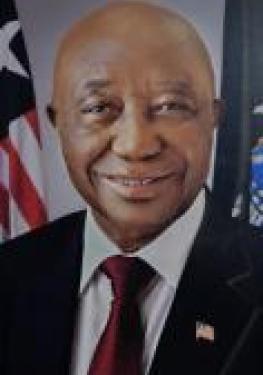
The Environmental Protection Agency of Liberia (EPA) and the United Nations Development Program (UNDP) are identifying areas across the country where protecting, sustainably managing and restoring nature can yield the greatest benefits for all.
The EPA and UNDP are bringing decision makers together to map Liberia’ essential regions for biodiversity, climate change mitigation, and sustainable development.
According to a release, nearly 20 of Liberia’s technicians and environmental policy experts met in a hybrid format to create ‘maps of hope’ that identify the country’s essential life support areas.
These maps will locate where actions to protect, sustainably manage, and restore nature can enable Liberia to deliver on its strategic priorities around biodiversity, climate change mitigation, and sustainable development.
EPA Deputy Executive Director, Randall M. Dobayou said “Liberia is rich in the context of biodiversity, and we pride ourselves as forerunner in fostering the agenda of nature-based solutions at the national and global level”.
The development of the ‘maps of hope’, according to Dobayou is key to informing data collection and project initiatives which will guide our development partners to achieve our national development plan.
“It is essential that our national experts together with the international team co-create the maps to reflect our national priorities, build on existing initiatives and innovation,” he added.
Humanity faces an unprecedented planetary challenge.
According to the Intergovernmental Panel on Climate Change (IPCC) report, we have only a decade to avoid the catastrophic impacts of climate change.
Furthermore, the Intergovernmental Panel on Biodiversity and Ecosystem Services (IPBES) confirms that if biodiversity loss continues at its current rate, one million species will be at risk of extinction.
The effects of climate change and biodiversity loss will likely be felt far and wide, posing two of the greatest threats to humanity per the World Economic Forum’s Global Risk Report.
However, we have the solution within our reach. By protecting, restoring, or sustainably managing nature, we can provide one third of the solution to mitigate climate change, improve water security, and safeguard the livelihoods of millions of people directly dependent on nature for their subsistence.
“Liberia is rich in the context of biodiversity, and we pride ourselves as forerunner in fostering the agenda of nature-based solutions at the national and global level.
Liberia, along with the other pilot countries (Cambodia, Chile, Colombia, Costa Rica, Dominican Republic, Ecuador, Haiti, Kazakhstan, Nepal, Peru, South Africa, and Uganda), will create ‘maps of hope’ developed to expand the use of spatial data in decision-making processes and promote the implementation of nature-based solutions in the country. The outcomes from this initiative will be used by UNDP and national stakeholders to scale-up action globally.
Over the coming months, 196 countries will agree on a new set of global goals for biodiversity that will guide action for the next 30 years, as well as an associated international policy framework. The results of this project will be used to influence key international policy processes, including activities related to the United Nations Framework Convention on Climate Change (UNFCCC), the United Nations Convention to Combat Desertification (UNCCD) and the 2030 Agenda for Sustainable Development.
“I believe this project is a testament to the United Nations Development Programme’s commitment to support countries in implementing nature-based solutions, using cutting-edge science to contribute to the achievement of the Sustainable Development Goals (SDGs)” commented by the UNDP Liberia Deputy Resident representative, Louis Kuukpen.
The workshop is led by UNDP and Liberia’s Environmental Protection Agency (EPA), with the support of the Swedish International Development Cooperation Agency (Sida).



